Why tinnitus is an electrical illness
How the deaf can hear | what's melanin doing in our ears?
What we’ll learn in this article:
1. How does light control our ability to hear?
2. What does the Sun sound like?
3. How do we use crystals in our ear to hear?
4. How scientists in 1933 knew we could hear light via crystal
5. Why is melanin our ear’s computer chip?
6. What does the tin foil hat have to do with sound?
7. How can the deaf be made to hear?
8. How airpods can lead to tinnitus
9. Current trends in tinnitus: two studies
10. Two ways we can reduce tinnitus
11. EMF 101 Masterclass: REGISTRATION NOW OPEN!
All articles are free. However, your support as a paid subscriber enables us to continue producing high-quality, independent research on important health topics like EMF.
As an ad-free platform, we rely on the support of our readers to keep this content accessible and free from external influence.
“Light is the shadow of God.”
-Plato
Have you ever lost your way in the dark without a flashlight?
I woke up the other morning in my pitch-black bedroom.
In typical fashion, I reached for my red-lit headlamp, only to find it was out of battery. To make sure I didn’t clunk my head into the nearest post, I treaded slowly, and quietly, also trying to listen to my footsteps as I meandered out of my sleep sanctuary and into the wilderness of the bathroom.
Have you ever wondered why our hearing becomes more acute in the dark?
Our ears can’t see, but in low-light environments they become more sensitive.
Our ears are meant to absorb the full spectrum of Sunlight. When there is no light present, our ears attempt to gather light like a sailboat does wind on a calm day.
We can’t see UV (ultraviolet) light with our eyes, but our ears receive the signal like a satellite dish receives EMFs (electromagnetic fields). Our ears contain a substance called melanin that absorbs UV, which is then converted into sound.1
If we stay out of the Sun too long, and in artificially-lit indoor environments, our melanin satellite dish becomes inactive, and the melody of life gets downgraded from the rich, dense sound of a vinyl Elvis record to that of an mp3 file you downloaded from a high-pitched teen Beatles tribute band.
If we keep bathing ourselves in blue light and wireless radiation, the tribute band eventually becomes a phantom Paul McCartney like we have today, that whistles in our ear, in the cold grey night of blue light.
Why is this so?
Hearing is more sensitive than vision when it comes to the pulsing of waves.
What waves have pulsed as the of Sound of Music Earth for aeons?
The Song Remains the Same… as the Sun
The vinyl record we used to hear for hundreds of thousands of years was from Sunlight, whose incoming signal would beam into our ears after some of the slower wavelengths of red and ambient light would spin around our external ear cartilage. The ridging in our ear design then focuses higher energy beams down into our land-based melanin space station (Houston, do we have a hearing problem?).
Instead of stressed NASA ground control operators, we have the engines of our cells, the mitochondria, that work tirelessly trying to finally relay these frequencies to an of our area brain called Ammon’s Horn, also known as the hippocampus:
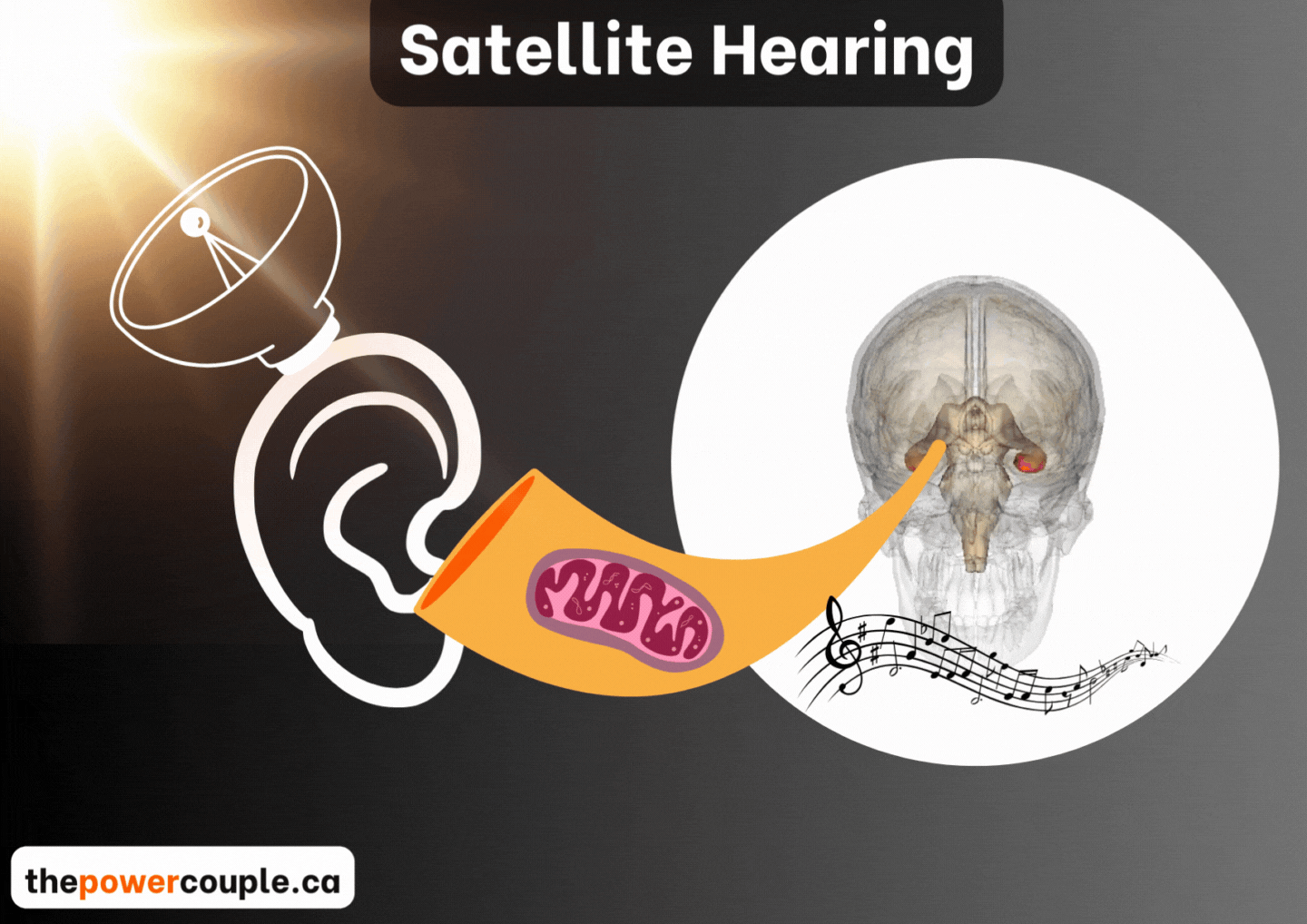
“We don’t have straightforward ways to look inside the Sun. We don’t have a microscope to zoom inside the Sun. Using a star or the Sun’s vibrations allows us to see inside of it.”
- Alex Young, associate director, NASA Heliophysics Science Division
In 2012, composer Robert Alexander made an audio file from measurements of the Sun's magnetic particle stream gathered by the Advanced Composition Explorer, a NASA satellite.2 While listening to the file, Alexander discerned a hum at a frequency of 137.5 Hz (cycles per second)—a sound close to a C-sharp below middle C.3
What does the Sun sound like?
Insane in the tectorial membrane
Aside from melanin, we have a crystal structure in our ear’s cochlea called the tectorial membrane that can process electrical signals, and convert the charged particles of photons (light) into what are known as phonons (sound waves).
Crystal radios were popular in the early days of radio, using only the frequency of the received radio signal to produce sound, needing no external power.4
Kingdom of the Crystal Drum
Our cochlea instantly converts so many varying frequencies, that a quantum process of transmitting light into sound via crystal is more efficient than a simply mechanical one of an ear drum emitting vibrations.
“No bigger than a hazelnut, the cochlea is able to take the roar of a lion, the song of a nightingale, and the squeak of a mouse, and reproduce them all with perfect fidelity in the form of electrical signals sent to the brain.”
,The Invisible Rainbow (2020)English physician and biochemist Lionel Naftalin studied the inner workings of the ear for fifty years, up until his death at age 96 in 2011. Naftalin believed that electrical forces were central. He focused attention on the tectorial membrane, a jelly-like substance that is both a semiconductor and piezoelectric liquid crystal.
Piezoelectric substances are able to convert electrical voltage into mechanical pressure, and vice versa. Quartz crystals are such an example, and are used in radio receivers to convert electrical vibrations into sound.
Semiconductors are used in electronics and computers, because they are able to relay a tremendous amount of data using electrical transmission. It turns out we operate the same way.
How is sound generated in our ears?
The standard theory of hearing used to be that our ear drums vibrate, and this causes the hair cells of our ears to bend, triggering nerve impulses. However this theory was always mechanical in nature, and disregarded the role of electricity.
As far back as 1933, scientists of the day were challenging this mechanical version of hearing. Augustus Pohlman, an anatomy professor and dean of the school of medicine at the University of South Dakota, was such a man. He believed that the hair cells of the ear were pressure sensors, which would explain how the ear could be so extremely sensitive. This also explained why the cochlea is embedded in the densest bone in the human body: the cochlea is a soundproof chamber.
What powers our melanin computer chip?
What is a skin pigment doing in our ear?
It turns out melanin is way more than just a pigment.
Remember those mitochondrial NASA ground operators working tirelessly at Ammon’s Horn? They need Sunlight to work smarter, not harder.
Sunlight powers our battery of mitochondria, causing a spark of electricity that the potassium (K) in the fluid of our inner ear uses to create UV light.5 Melanin then uses this light for crucial metabolic reactions such as fighting cancer and inflammation.
The more UV we are able to absorb, the more melanin we build on our cochlear sound-proofing surface, which houses our sound-processing system.
You can think of potassium (K) as our diode in this formula for life. A diode is a two-terminal electronic component that conducts current primarily in one direction.
Melanin is crucial in not only helping us absorb more UV (ultraviolet) light that our bodies can use, but also helps us regulate excess calcium (Ca). This is important because EMFs from wireless devices can drive excess calcium into our organs, leading to a myriad of health issues such as arthritis and blood clots.6
An imbalance of calcium in our inner ear may lead to a literal imbalance by causing symptoms similar to that of Meniere's disease, along with ringing in the ears (tinnitus).
Potassium helps regulate calcium in our body. If we have too little potassium, we put ourselves at an increased risk of calcifying our arteries, and compromise melanin function.7
Do you know why the melanin of our cochlea is dark brown, and our neuromelanin (substantia nigra) located deep in our brain is black?
The darker the pigment, the more light it absorbs.
We are light beings meant to see the song, and hear the shadow of God.
What does the tin foil hat have to do with sound?
This phrase is often ridiculed because we don’t understand the concept of sound.
Again - many of us misunderstand how we hear.
Microwave hearing
In 1960, the sounds of silence struck a chord.
Biologist Allan H. Frey, who was employed at General Electric’s (GE) Advanced Electronics Center at Cornell University, bumped into a fellow technician at GE who told Frey that he could hear radar. Frey remembers walking to the man’s work site near Syracuse: “When I walked around there and climbed up to stand at the edge of the pulsating beam, I could hear it, too…going zip-zip-zip.” The auditory phenomenon of microwave sound was also described as a “buzz, click, hiss or bump.”8
Even before 1960, Frey, being a curious man, was fascinated with how electricity in the air affects our nervous system. This chance encounter in Syracuse led Frey to quit his job at GE and pursue full-time research into the effects of microwave radiation. In 1961, he published his first paper on “microwave hearing.”1 The microwave auditory effect (MAE) is commonly known as the Frey effect. Frey would spend the next twenty years researching the effects of microwaves on the auditory and nervous system, the eyes, brain, and the heart.
The tin foil hat
In his studies, which were funded by the Office of Naval Research and the US Army, Frey discovered that when a metal shield in the form of an aluminum mesh/ screen was placed between the subject and the radar, no microwave sounds were heard.9The aluminum was placed on our temporal region, where we are most sensitive to EMFs.
Many people who complain of “microwave hearing” (including myself) can sense that these sounds emanate not from our ear, but right in front, by the location of our brain's temporal lobe (where our temples are). This is due to the piezoelectric nature of our cochlea, as it converts electric currents into sound.10
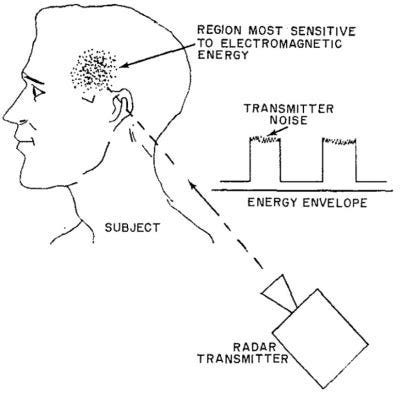
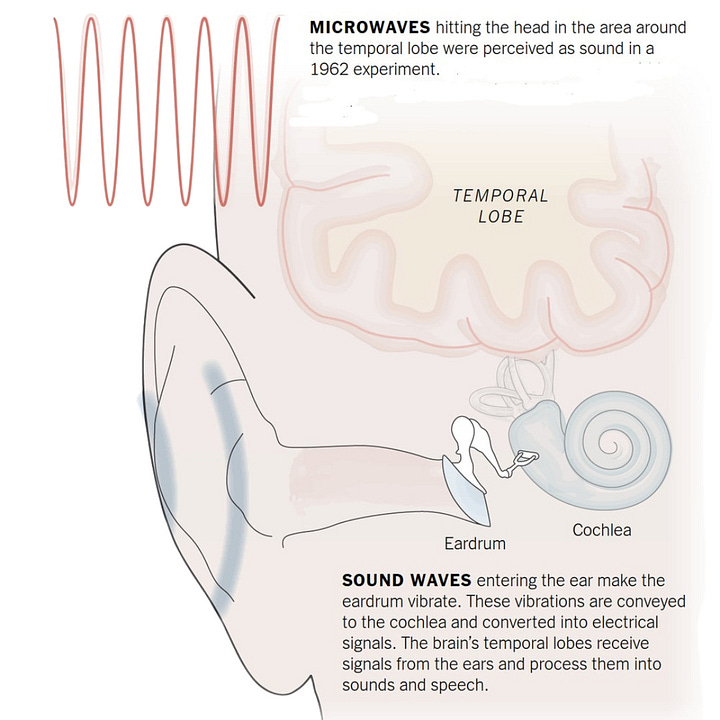
How can the deaf be made to hear?
Many mainstream science websites state that human hearing is in the audible frequency range, between 20-20,000Hz (Hz = cycles per second). This is incorrect.
Since the 1940s, there has been much scientific literature proving that humans, even the deaf, can hear in the ultrasonic frequency range of 20,000-225,000 Hz, a range previously relegated to the likes of bats and dolphins.5
The ability to hear these tones depends on the health of the acoustic nerve. The deaf have what is called conduction deafness, and not nerve deafness. Even since 1925, amateur radio enthusiasts found that deaf people, whose eardrums could no longer function properly, but whose (acoustic) nerve centers are intact, can hear radio.6 The deaf were able to hear when an electrode was applied to the surface of the skin, which vibrated and created sound by reaching the inner ear through bone conduction.7
In 1936, this phenomenon was named “electrophonic hearing” by Harvard psychologist Stanley Stevens. In 1958, a young inventor by the name of Patrick Flanagan would apply the work of Stevens by inventing the Neurophone, which is still used today. This device works by skin vibration as well, but uses a carrier frequency in the ultrasonic range.
These findings are in tune with the priniciple of piezoelectric transmission of light into a mechanical force of sound, as our nerves pick up on electrical wave impulses in our environment.
Airpods are for radioheads
Devices such as airpods and fitbits use radiofrequency (RF, a type of EMF), which ultimately vibrates and steals electrons from your tissues.
A hallmark of sound health is having a net negative charge, and being able to donate electrons (negative charge) to many cellular processes that need them. This is why food high in NAD+ is crucial, along with practices like grounding (as long as their is no ground current present, as there is in North America due to the utility companies using the Earth as the return / ground path).
When we lose electrons, we also become dehydrated more easily as our bodies require charged (structured) water to work. This structured water barrier is what ultimately buffers the violent vibrations our bodies experience as a result of EMFs from wireless devices such as airpods.
The light that we “hear” from airpods have short wavelengths with high intensity. These wavelengths cause us to lose nitric oxide (NO), which when balanced helps us maintain healthy circulation (think beets) and maintain energy levels.
This is how our brains and nervous system perceives and receives bluetooth radiation at 2.45 GHz, or 2.5 billion times per second!:
Remember - melanin absorbs UV light. This happens when we’re in Sunlight. The Sun charges the water in our cells, and allows amino acids like tyrosine, the building blocks of life, to be activated. This then leads to the creation of melanin along with important neurotransmitters like dopamine:
Studies showing an increase in tinnitus
Rates of tinnitus have been rising for at least the last thirty years, and have climbed by one-third from 1982-1996 alone.11 By 2004, over 50 million adults were found to suffer from tinnitus. The surprising fact, found by a US nationwide survey conducted in 2010 by the Better Hearing Institute, was that 44 percent of Americans who complained of ringing in their ears said they had normal hearing. Researchers falsely assumed that the subjects of the study had hearing loss but did not know it.
Similar hearing studies had already been conducted at the University of Madison Wisconsin in 1995 with a follow-up in 2008. These researchers had expected to see a decline in tinnitis, as hearing disorders among older adults declined. However they found just the opposite: a steady increase in tinnitus in all age groups occurred during the 1990s and 2000s, increasing at a rate of about 50 percent.10
Studies on seven-year-old children by professor of audiology Kajsa-Mia Holgers at the University of Jonkoping in Sweden, conducted in 1997 and 2005, revealed a staggering 42 percent of children reporting ringing in their ears. Holgers also found that more than half of high school students aged 13 to 16 reported tinnitus in some form during the 2003-2004 school year. In 2004, school children aged 9 to 16 reported tinnitus, and 14 percent heard it everyday.
Why would children, who normally have very healthy hearing, be experiencing tinnitus?
If a child or adult has otherwise healthy hearing, then we must look at what may be causing this disturbance in our environment.
We know that we can hear electromagnetic energy in the ultrasonic range from 20 kHz to about 225 kHz.
What transmits at 20 kHz- 225 kHz?
The same radiowaves and radar that Allan Frey could hear, and proved to be audible in his studies, which have been increasingly surrounding us since the 1940s.
Two tactics I employ to reduce tinnitus:
1. Grounding soundly
Did you know that our mitochondria are magnetic?12
Researchers at Ohio University discovered that both heat and sound are controlled by magnetic fields.13 Both heat and sound are created when atoms vibrate. The researchers found that magnetic fields caused some of the phonons (sound particles) passing through the material to vibrate out of sync so that they bumped into one another. Our cells communicate via vibration and frequencies of 0-75 Hz.14
Our mitochondria, which process the auditory signal at Ammon’s Horn, are inherently magnetic. When we ground, we can regulate magetic fields for our mitochondria, giving them more proceessing power for light and sound.
I have read personal accounts of some fellow “mitochondriacs” (those who support their mitochondria at all costs!) who have had acute tinnitus after shutting off their circuit breaker (emanates a large magnetic field).
They report immediate relief after grounding:
“At night when I shutdown the power to the home, I go to the circuit breaker, which outputs around 100+ milliGauss when in close proximity to it. Doing this at 10pm before going to sleep I’m thinking can be disrupting, even a 10 second exposure. In the first month of moving into my new home, I noticed that after getting into bed and shutting down the power, I get a few minutes of tinnitus afterwards.
To compensate, I think I’ve successfully hacked it in a way you may not expect. After flipping the switches, I perform ‘Immediate Grounding’ immediately thereafter (within about 10 seconds). I can do this because in my home, I have an internal stone-wall that’s connected to the earth (image below). So I experimented this past week.
After shutting down the power, I go over to the wall and touch it for about 2 minutes. Voila… it appears I have little to no tinnitus when I crawl into bed. Last night I only touched the wall for a few seconds and then got into bed, and I noticed the tinnitus, but wasn’t as intense and went away after just a minute. So I’m thinking there’s an actual perceptive difference when I ground after touching the circuit breaker, and when I don’t ground after touching the circuit breaker.”
- “Scotty”
I like to stand barefoot on my basement floor while I type substack articles. I’ve tested the ground current in this part of the floor, which is zero volts per meter for electrical fields. Measuring this way is more effective than doing a body voltage test, which doesn’t measure actual current, only potential.
2. Live in the near-infrared light district
I don’t want to sound like a broken record, but light is the key to sound. Melanin is the pigment located in our ear that is built up through exposure to infrared and UV light. Before we can absorb UV to optimize the effects of melanin, we need to first load up on infrared light during the AM and throughout the year.
Sunlight is still essential as the Sun carries an infinite amount of wavelengths, however infrared light therapy can also help us build melanin and optimize mitochondrial function. However when choosing a light therapy source, near infrared (NIR) proves to be the best. NIR also helps us increase subcellular melatonin, which we use during the day and night to fight cellular damage.
Far infrared saunas don’t penetrate our skin as deeply, and many infrared saunas emit extreme levels of EMF radiation.
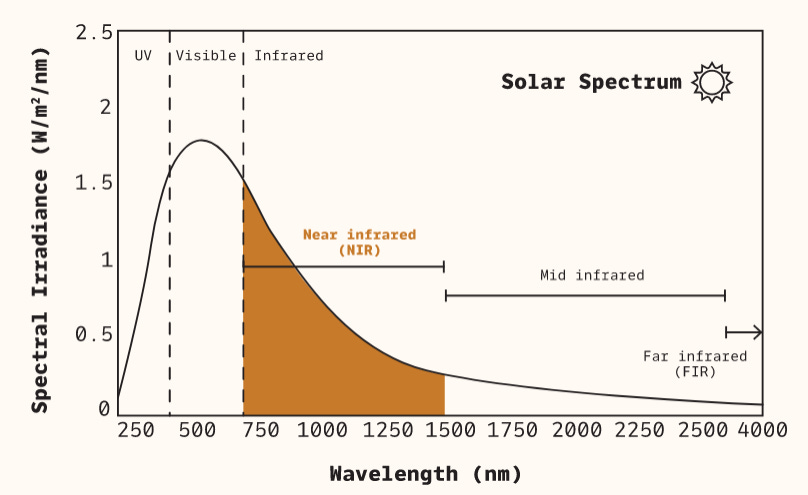
.
This is why I love the people at SaunaSpace, as they know how to maximize the benefits of NIR by reducing unnecessary background EMF in their saunas.
If you don’t want to go that route, then get out in the light in the morning.
Remember, there’s no such thing as bad weather, only bad clothing.
Skin to win.
If you’re bashful, you can pick a spot in your house where no one will see you, like my basement…but I won’t show you those pictures.
Thank you so much for taking the time to read this article, and please share with anyone you know who could benefit.
Power ON with light,
Power OFF at night,
Roman & Bohdanna
Support Independent EMF Research!
Donate in Bitcoin.
Send to our BTC Address :
bc1qfwtn8f95z7urkgfgj8c9t6dt3lay0shtgazr72
Additional Resources:
This infrared sauna eliminates EMF
Did you know that a 2015 study showed a 40% reduction of death from all causes for those sauna bathing just two to three times per week? In today’s episode, we discuss: Why most infrared saunas do more harm than good, and how SaunaSpace works to eliminate EMF
https://en.wikipedia.org/wiki/Crystal_radio
https://jackkruse.com/cpc-14-tinnitus-quantum-view-point/
Pall ML. Electromagnetic fields act via activation of voltage-gated calcium channels to produce beneficial or adverse effects. J Cell Mol Med. 2013 Aug;17(8):958-65. doi: 10.1111/jcmm.12088. Epub 2013 Jun 26. PMID: 23802593; PMCID: PMC3780531.
Sun Y, Byon CH, Yang Y, Bradley WE, Dell'Italia LJ, Sanders PW, Agarwal A, Wu H, Chen Y. Dietary potassium regulates vascular calcification and arterial stiffness. JCI Insight. 2017 Oct 5;2(19):e94920. doi: 10.1172/jci.insight.94920. PMID: 28978809; PMCID: PMC5841863.
Firstenberg, A. The Invisible Rainbow. 2020, pp. 175-177
Chou & Guy 1979: 193–197
Firstenberg, A. The Invisible Rainbow. 2020, p. 300
National Center for Health Statistics, 1982-1996.
Franco-Obregón, A. Harmonizing Magnetic Mitohormetic Regenerative Strategies: Developmental Implications of a Calcium–Mitochondrial Axis Invoked by Magnetic Field Exposure. Bioengineering 2023, 10, 1176. https://doi.org/10.3390/bioengineering10101176
Oschmann, James, Energy Medicine, London: Churchill Livingstone, 2000.



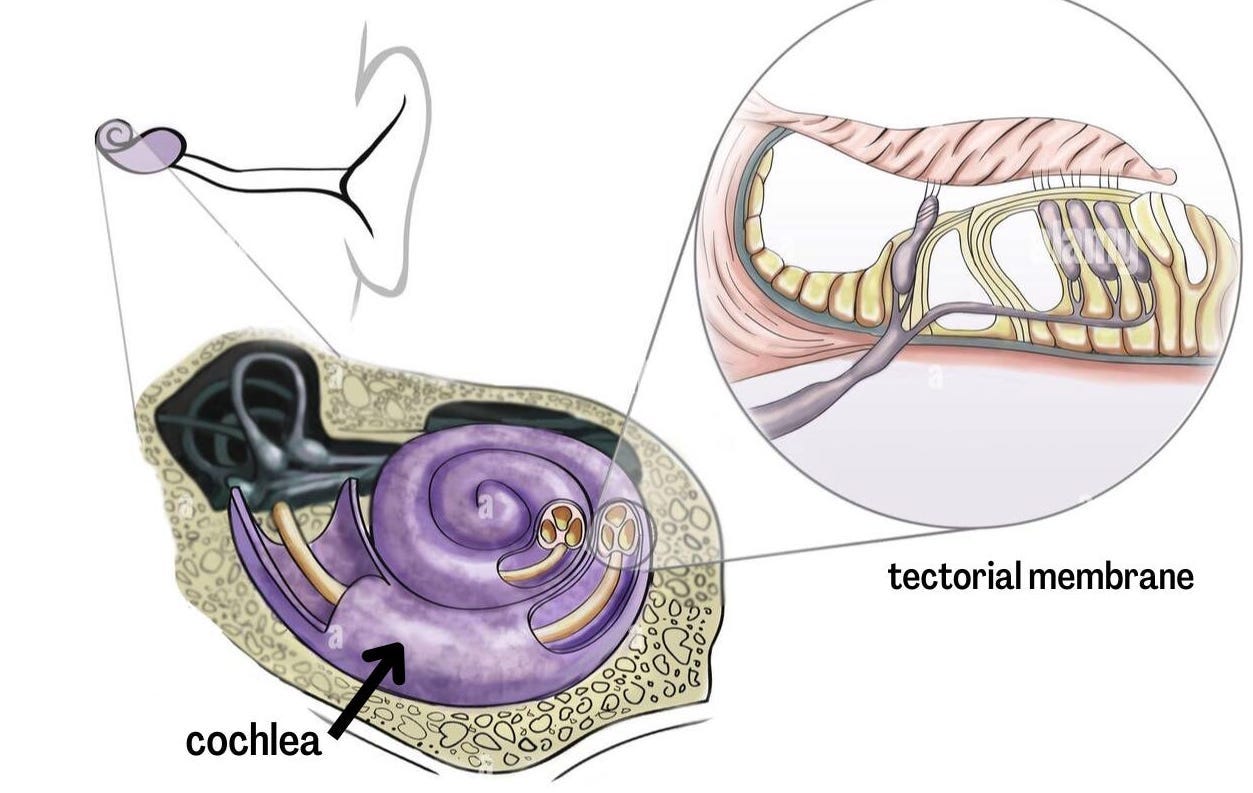
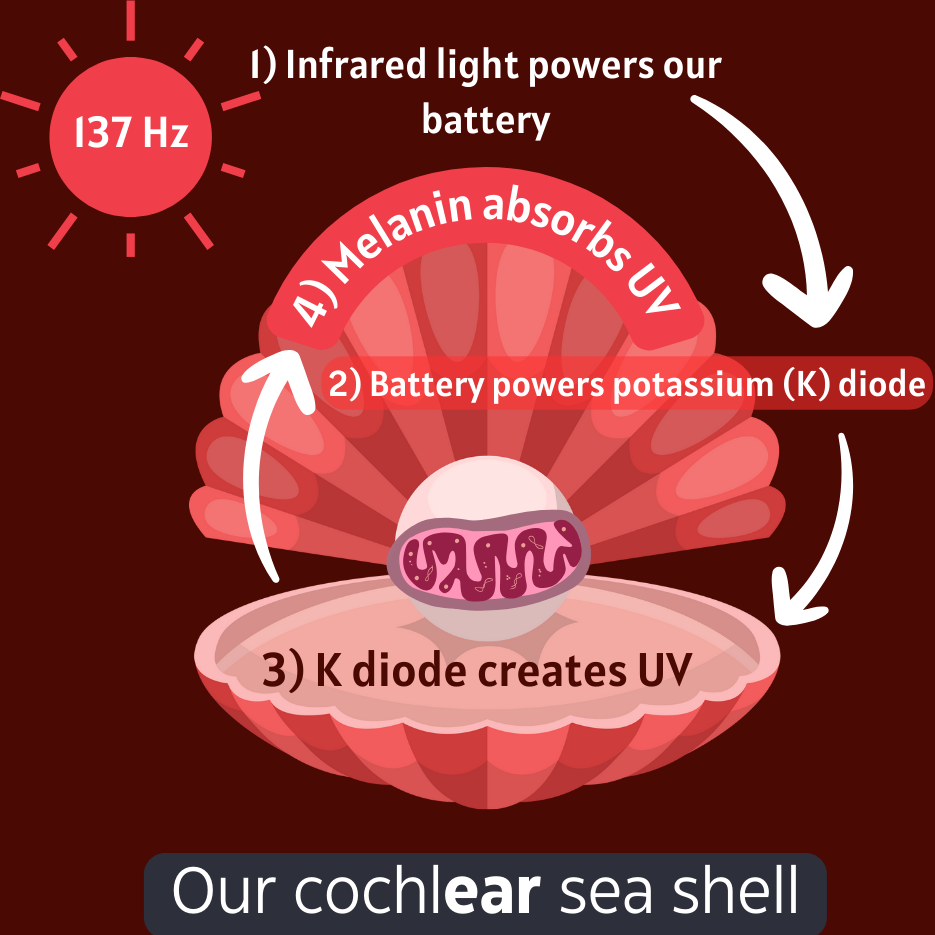






Amazing post. Thank you so much.
I've known for a long time that I could hear bats sounding their radar ultrasound.
I rationalized that it would be lower harmonics that I'd pick up though.
As a great fan of (real) science I've come to having lost all trust and respect for what's called science these days.
As I've been suffering from debilitating tinnitus for a few years now which cost me my job and income, and after having gone down the road of medical examinations and expert treatments (to no avail), I find myself left to my own devices.
So discovering this post and substack really made my day to say the least.
Needless to say my situation has me vacillating between hope and despair all this time.
The info above has me energized and motivated to crack this nut at last.
So very interesting. Tinnitus for many years, wringing 24 hrs a day, however we can’t shut off power in Minnesota. When it gets warm enough I’m going to try this. Thank you.